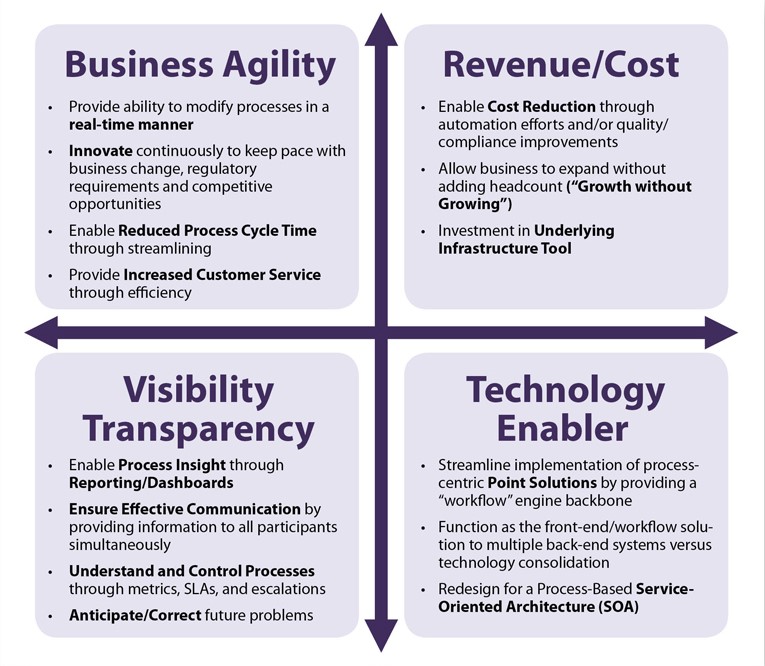Processes play a critical role in helping companies achieve their business strategy by aligning resources, technology and supporting structures towards the achievement of desired business outcomes and / or driving a competitive advantage.
Business Process Management (BPM) is a disciplined management approach and methodology that provides end-to-end process understanding, visibility and control while ensuring effective communication across an organisation. Some organisations discuss BPM as process OR technology, but we view BPM as the convergence of process, people AND technology.
Our customers can leverage the key differentiators of our BPM practice to achieve maximum business benefits in a short amount of time. We:
With the numerous external challenges that can affect your organisation everyday – tools to enable optimal remote work can help minimise or prevent disruption in your business processes.
BPM addresses key strategic issues by allowing businesses to grow in a cost-competitive manner with desired flexibility and speed. The four main areas where BPM can have a significant impact on a business include:

Business Process Management Solutions (BPMS) bring technology into the BPM equation by providing a platform to model, manage, optimise and rapidly adjust business processes. These technology solutions are toolkits for solving multiple process-related issues through automation, collaboration and visibility, serving two primary purposes: process-based/process improvement solutions and technology solutions. BPMS brings a “process layer” to an organisation in order to eliminate the silos of people, data and applications that business processes generally operate within. In other words, BPM fills the white space between these silos.